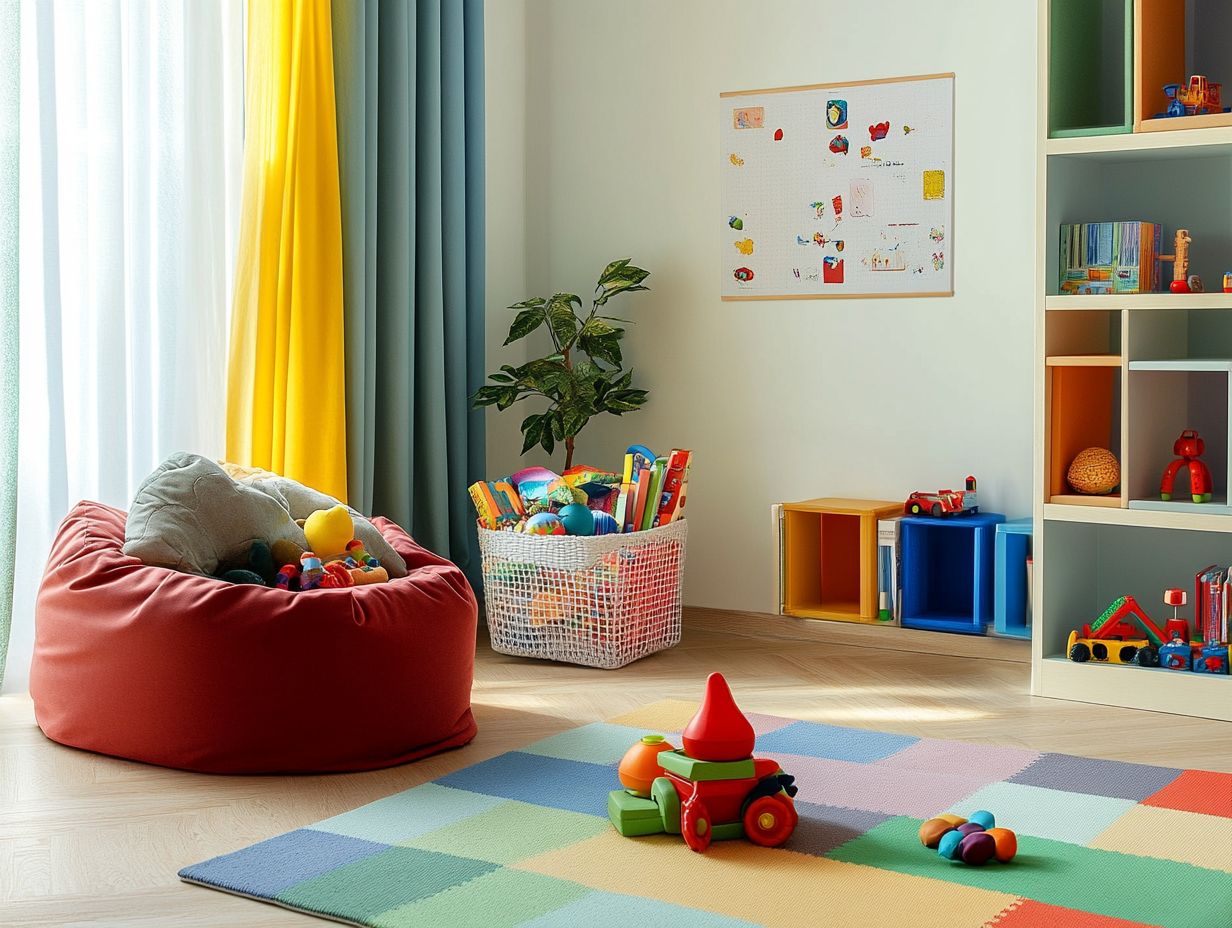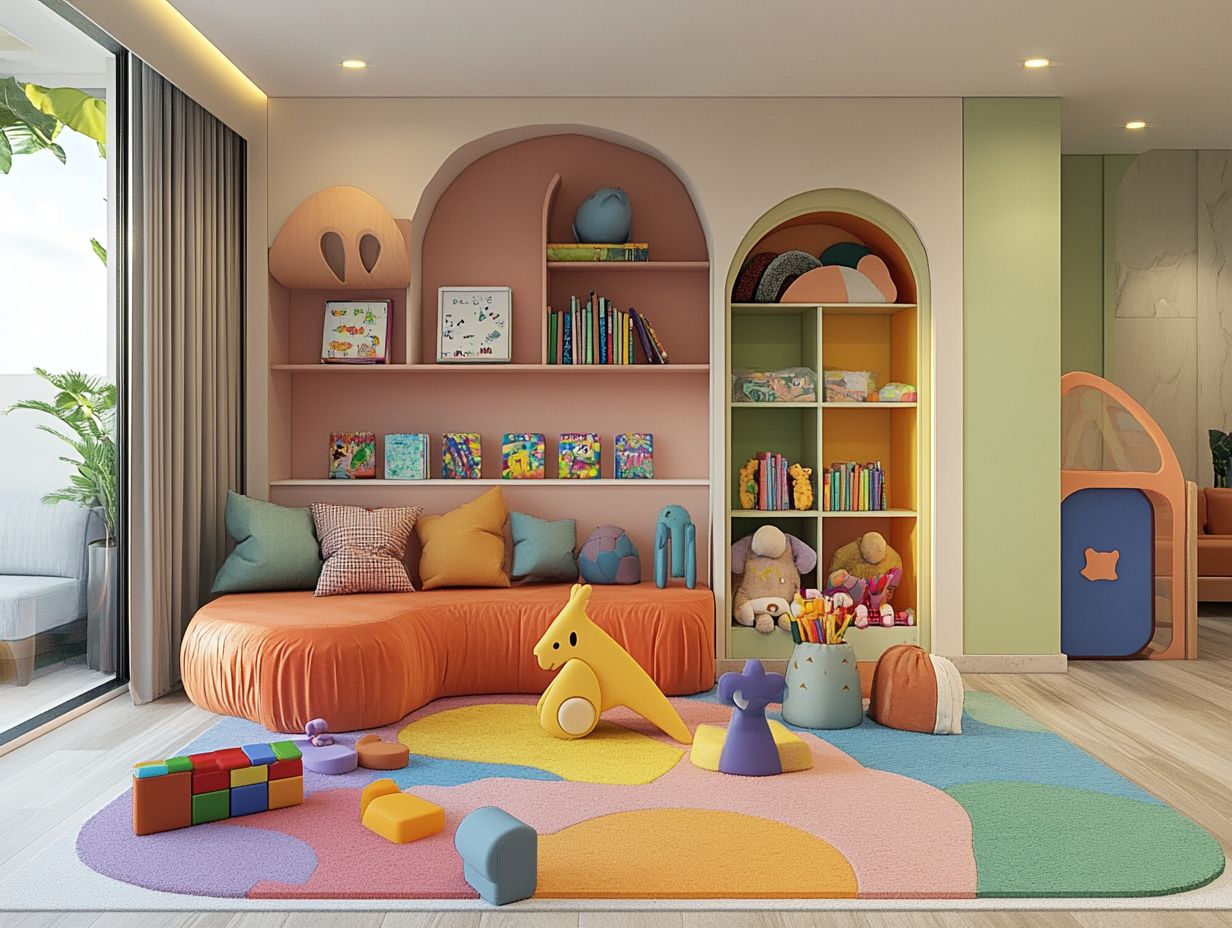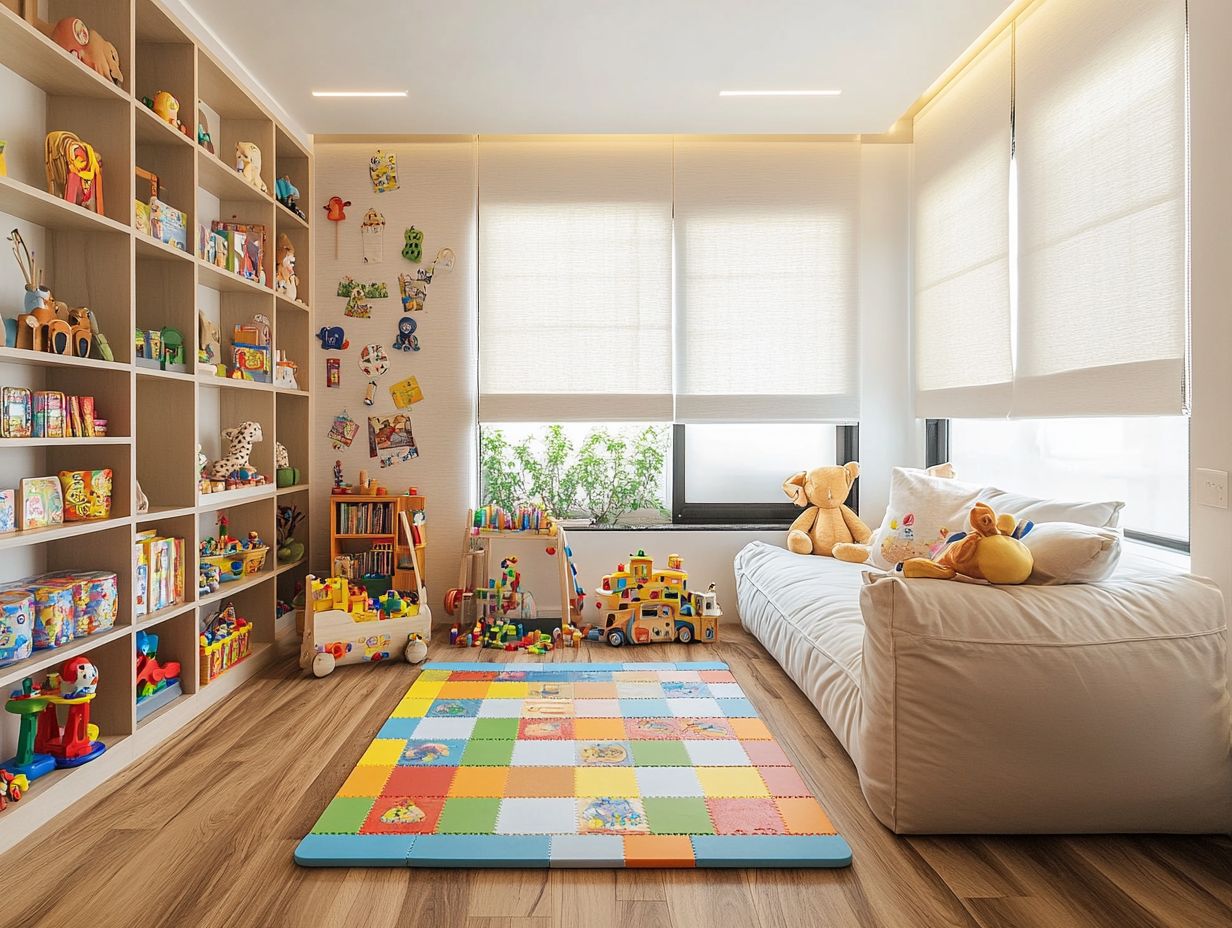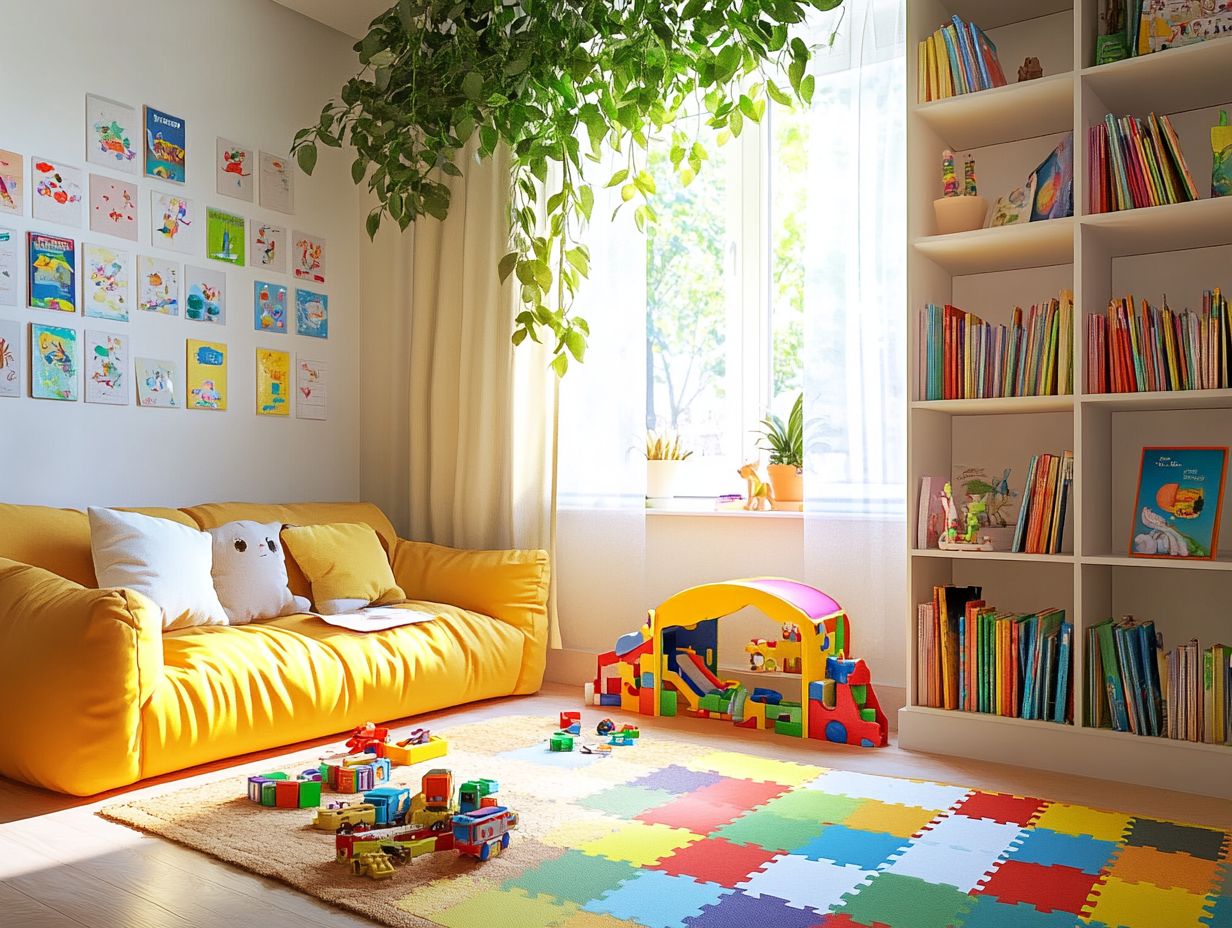Creating a home that is both safe and enjoyable for children is essential for their growth and development, making it a truly kid-friendly atmosphere.
This article delves into the importance of making your home kid-friendly, covering everything from assessing potential hazards to implementing straightforward home improvement changes that enhance safety.
You will discover ideas for incorporating playful and educational spaces, and learn how involving your children in the process can impart valuable lessons about responsibility and safety.
Transform your home into a nurturing environment where children can truly thrive!
Why Make Your Home More Kid-Friendly?

Creating a kid-friendly home is vital for fostering a nurturing environment where children can thrive both safely and joyfully. By prioritizing child safety, family-friendly design, and effective organization, you enhance the overall space while also nurturing positive conditions for family bonding and developmental growth.
It is important to consider factors such as outdoor safety, outdoor play, and engaging indoor activities that can enrich children's lives while ensuring their well-being.
The Importance of Creating a Safe and Fun Environment for Children
Creating a safe and enjoyable environment for children involves thoughtfully integrating safety features, sensory-friendly design, and engaging elements that encourage creativity and exploration, including colorful decor and playful designs. A well-designed space can stimulate both learning and imaginative play while ensuring that children are protected from potential hazards.
The importance of safety in play areas cannot be overstated, as it allows children to express themselves freely without the fear of injury. Implementing child-proofing methods, such as rounded corners on furniture and soft edges in flooring, is crucial for minimizing risks. Additionally, using non-toxic materials for toys and decor, along with washable fabrics and rugs, helps safeguard against harmful chemicals, fostering a healthier play environment.
Incorporating colorful decor and wall art not only brightens the space but also captures children's attention. Sensory play elements—such as textured surfaces and sound features—add an enriching dimension to their experiences, promoting both emotional and cognitive growth.
Assessing Your Home for Potential Hazards

Assessing your home for potential hazards is an important step in ensuring child safety and creating a secure environment for children to explore.
By identifying areas that may present risks—such as sharp corners, clutter management, and unsecured furniture—you can take immediate action to address these dangers and enhance your home improvement efforts.
Identifying and Addressing Potential Dangers
Identifying and addressing potential dangers in your home requires a systematic approach to child-proofing, which includes supervision and accessibility. This involves ensuring that safety features are properly implemented and establishing healthy boundaries for your children. By taking proactive measures, you can significantly reduce the risks they encounter as they explore their surroundings.
One effective strategy for identifying hazards is to routinely assess the environment and enhance visual cues. For instance, marking off-limits areas with bright tape or signage can be very helpful. Creating well-defined boundaries within play areas can assist children in understanding where it is safe to play.
Implementing safety features, such as safety gates at stairways or hazardous zones, along with child safety locks on cabinets, is essential in preventing accidents. Additionally, considering ergonomic design when arranging furniture allows for easy movement, reducing the risk of injury from sharp corners.
By integrating these thoughtful modifications, caregivers can create an environment that prioritizes safety while encouraging independent exploration and nurturing a sense of empowerment in children.
Easy Ways to Make Your Home More Kid-Friendly

Enhancing the kid-friendliness of your home can be accomplished through straightforward adjustments and mindful additions that prioritize child safety, comfort, and accessibility.
By opting for non-toxic materials, introducing multifunctional furniture, and implementing creative storage solutions, you can transform your space into a welcoming haven for children.
Simple Changes and Additions for a Child-Safe Home
Implementing simple changes, such as adding safety gates, ensuring easy maintenance, and using colorful decor, along with washable surfaces, can greatly enhance child safety in the home. By incorporating elements that promote sensory play, one can create a rich environment tailored specifically for children.
To further improve safety, it is advisable to position gates at both the top and bottom of staircases and to select childproof locks for cabinets that contain hazardous materials.
Designating specific activity corners filled with various textures and colors can inspire creativity while keeping children engaged in safe play. Choosing washable surfaces, including rugs and carpets, will not only make clean-up easier but also help maintain a welcoming atmosphere.
Moreover, utilizing non-toxic paints and durable materials enhances both the aesthetic appeal and safety of the space. This allows caregivers to focus on creating an engaging environment where children can explore and thrive without constant concern.
Creative Ideas for a Fun and Engaging Home

Transforming a home into a fun and engaging space for children involves embracing creative ideas that encourage imaginative play, outdoor activities, and learning. By incorporating dedicated play areas, sensory-friendly designs, and educational toys, one can create an environment that fosters family gatherings, learning zones, and enriching experiences.
This thoughtful approach not only stimulates children's creativity but also strengthens family bonds.
Incorporating Play and Learning Spaces
Incorporating play and learning spaces in the home is essential for promoting enriching experiences that stimulate creativity and cognitive development. By designing dedicated areas for sensory play and collaborative activities, one can create opportunities for children to engage actively with their environment.
These thoughtfully crafted zones offer more than just a place to play; they foster an atmosphere where imagination and creative spaces can truly flourish. Age-appropriate activities and furniture play a crucial role in ensuring that each child can explore their interests safely and comfortably.
For example, low tables and soft seating options encourage children to gather and interact, thereby fostering social skills and cooperation. Vibrant colors, interactive elements, and playful decor enhance the visual appeal, making these spaces more inviting for little ones to immerse themselves in play.
Ultimately, a well-organized space not only captivates curiosity but also supports developmental milestones, nurturing a lifelong love for learning.
Getting Children Involved in the Process
Involving children in the home improvement process fosters a sense of responsibility and strengthens family bonds. By encouraging their participation in creating safe and imaginative spaces, children can learn valuable lessons about safety and the significance of maintaining a nurturing environment.
This involvement not only enables them but also helps to instill a sense of pride in their contributions to the home, promoting family interaction and responsibility.
Teaching Responsibility and Safety Through Home Improvements
Teaching responsibility and safety through home improvements allows children to grasp the importance of safety features while encouraging them to take an active role in their living space. Incorporating engaging design elements can make this process both enjoyable and informative.
By involving children in tasks such as painting rooms, organizing spaces, or installing safety measures like smoke detectors, families can create opportunities to discuss the significance of these elements, including engaging in DIY projects. These hands-on experiences not only foster a sense of ownership but also help children appreciate the value of teamwork and problem-solving.
Transforming these projects into family rituals—perhaps dedicating a weekend each month to tackle a new improvement—can strengthen family bonds while reinforcing lessons about collaboration, shared responsibilities, and the importance of family activities. In this manner, children acquire essential life skills and become more mindful of their environment.



